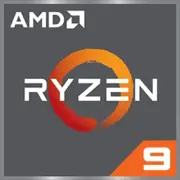AMD Ryzen 9 5900HX vs Intel Core i7-14700HX
CPU Comparison Result
Below are the results of a comparison of AMD Ryzen 9 5900HX and Intel Core i7-14700HX processors based on key performance characteristics, as well as power consumption and much more.
Advantages
- More Total Cores: 20 (8 vs 20)
- Larger L3 Cache: 33 MB (16MB vs 33 MB)
- Newer PCI Express Version: 5.0 and 4.0 (PCIe® 3.0 vs 5.0 and 4.0)
- Higher Memory Type: Up to DDR5 5600 MT/s Up to DDR4 3200 MT/s (DDR4 - Up to 3200 MT/s, LPDDR4 - Up to 4266 MT/s vs Up to DDR5 5600 MT/s Up to DDR4 3200 MT/s)
- Newer Launch Date: January 2024 (January 2021 vs January 2024)
Basic
AMD
Label Name
Intel
January 2021
Launch Date
January 2024
Laptop
Platform
Mobile
-
Model Name
?
The Intel processor number is just one of several factors - along with processor brand, system configurations, and system-level benchmarks - to be considered when choosing the right processor for your computing needs.
i7-14700HX
Cezanne
Code Name
Raptor Lake
CPU Specifications
8
Total Cores
?
Cores is a hardware term that describes the number of independent central processing units in a single computing component (die or chip).
20
16
Total Threads
?
Where applicable, Intel® Hyper-Threading Technology is only available on Performance-cores.
28
-
Performance-cores
8
-
Efficient-cores
12
3.3GHz
Basic Frequency
-
Up to 4.6GHz
Max Turbo Frequency
?
Max Turbo Frequency is the maximum single-core frequency at which the processor is capable of operating using Intel® Turbo Boost Technology and, if present, Intel® Turbo Boost Max Technology 3.0 and Intel® Thermal Velocity Boost. Frequency is typically measured in gigahertz (GHz), or billion cycles per second.
-
-
Performance-core Base Frequency
2.1 GHz
-
Efficient-core Base Frequency
1.5 GHz
-
Performance-core Max Turbo Frequency
?
Maximum P-core turbo frequency derived from Intel® Turbo Boost Technology.
5.5 GHz
-
Efficient-core Max Turbo Frequency
?
Maximum E-core turbo frequency derived from Intel® Turbo Boost Technology.
3.9 GHz
4MB
L2 Cache
-
16MB
L3 Cache
33 MB
FP6
CPU Socket
?
The socket is the component that provides the mechanical and electrical connections between the processor and motherboard.
FCBGA1964
TSMC 7nm FinFET
Technology
?
Lithography refers to the semiconductor technology used to manufacture an integrated circuit, and is reported in nanometer (nm), indicative of the size of features built on the semiconductor.
Intel 7
45+W
TDP
55 W
-
Processor Base Power
?
The time-averaged power dissipation that the processor is validated to not exceed during manufacturing while executing an Intel-specified high complexity workload at Base Frequency and at the junction temperature as specified in the Datasheet for the SKU segment and configuration.
55 W
-
Maximum Turbo Power
?
The maximum sustained (>1s) power dissipation of the processor as limited by current and/or temperature controls. Instantaneous power may exceed Maximum Turbo Power for short durations (<=10ms). Note: Maximum Turbo Power is configurable by system vendor and can be system specific.
157 W
105°C
Max. Operating Temperature
?
Junction Temperature is the maximum temperature allowed at the processor die.
100°C
PCIe® 3.0
PCI Express Version
?
PCI Express Revision is the supported version of the PCI Express standard. Peripheral Component Interconnect Express (or PCIe) is a high-speed serial computer expansion bus standard for attaching hardware devices to a computer. The different PCI Express versions support different data rates.
5.0 and 4.0
Memory Specifications
DDR4 - Up to 3200 MT/s, LPDDR4 - Up to 4266 MT/s
Memory Type
?
Intel® processors come in four different types: Single Channel, Dual Channel, Triple Channel, and Flex Mode. Maximum supported memory speed may be lower when populating multiple DIMMs per channel on products that support multiple memory channels.
Up to DDR5 5600 MT/s Up to DDR4 3200 MT/s
-
Max Memory Size
?
Max memory size refers to the maximum memory capacity supported by the processor.
192 GB
-
Memory Channels
?
The number of memory channels refers to the bandwidth operation for real world application.
2
GPU Specifications
AMD Radeon™ Graphics
Integrated Graphics Model
?
An integrated GPU refers to the graphics core that is integrated into the CPU processor. Leveraging the processor's powerful computational capabilities and intelligent power efficiency management, it delivers outstanding graphics performance and a smooth application experience at a lower power consumption.
Intel® UHD Graphics for 14th Gen Intel® Processors
2100 MHz
Graphics Frequency
?
Graphics max dynamic frequency refers to the maximum opportunistic graphics render clock frequency (in MHz) that can be supported using Intel® HD Graphics with Dynamic Frequency feature.
1.6 GHz
8
Graphics Core Count
-
Miscellaneous
Windows 10 - 64-Bit Edition, RHEL x86 64-Bit, Ubuntu x86 64-Bit *Operating System (OS) support will vary by manufacturer.
OS Support
-
Benchmarks
Geekbench 6 Single Core
Ryzen 9 5900HX
1835
Core i7-14700HX
2921
+59%
Geekbench 6 Multi Core
Ryzen 9 5900HX
7485
Core i7-14700HX
17475
+133%
Geekbench 5 Single Core
Ryzen 9 5900HX
1404
Core i7-14700HX
2003
+43%
Geekbench 5 Multi Core
Ryzen 9 5900HX
7478
Core i7-14700HX
17726
+137%
Passmark CPU Single Core
Ryzen 9 5900HX
3196
Core i7-14700HX
3782
+18%
Passmark CPU Multi Core
Ryzen 9 5900HX
22609
Core i7-14700HX
37592
+66%







